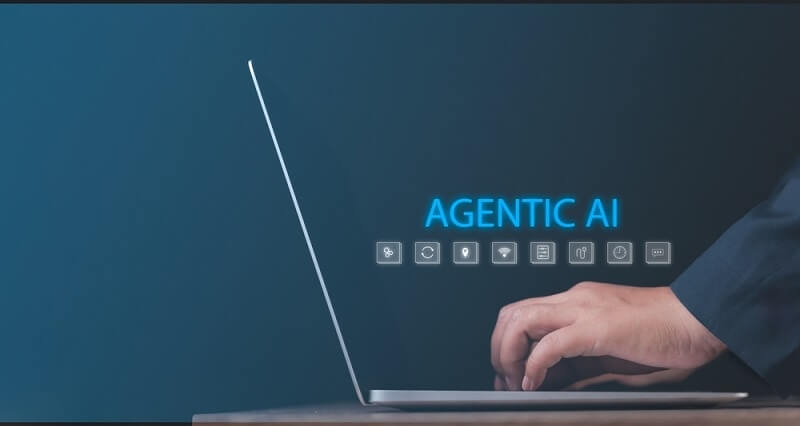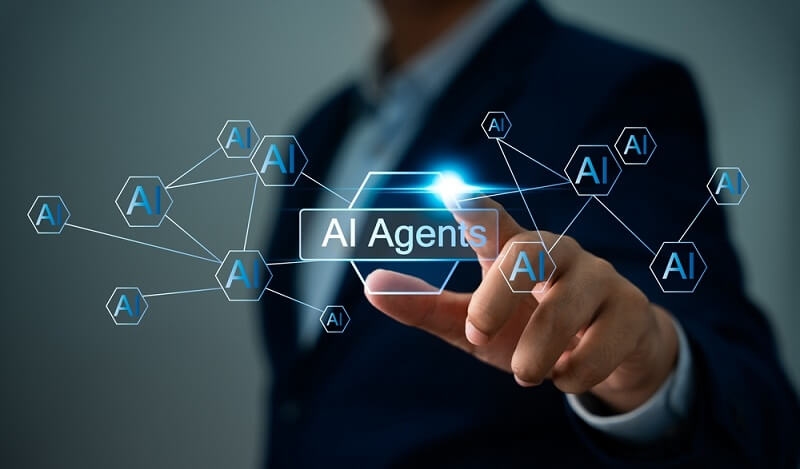Future of Autonomous Workflows With Agentic AI Automation

Imagine what if machines did not just respond to your instruction but, they decided on their own. A world where software does not wait for your instructions to take actions, instead it actively pursues goals and adapts to obstacles on its own.
This may sound fictitious, but the rise of agentic AI automation has completely changed everything.
Autonomous workflows are now dynamic ecosystems that are guided by the intelligent agents capable of improving their performances with proper reasoning and selection. This blog will explore everything related to agentic AI automation and understand how it can change the world.
What Is Agentic AI vs Generative AI?
It’s easy to confuse agentic AI with generative AI, especially when both are evolving fast and often overlap in real-world use cases. But the distinction lies not in what they can say or create — but in what they do with that capability.
Generative AI creates content: text, images, code, audio — based on patterns learned from massive datasets. It’s reactive. It generates outputs when prompted.
Agentic AI, on the other hand, is goal-driven. These systems don’t just produce answers. They pursue objectives. They can plan, take multiple steps, evaluate outcomes, and loop back if needed. It’s a shift from output to outcome.
To simplify:
- Generative AI: You give an instruction and it does the task
- Agentic AI: You explain the required goal and it does the work on its own.
That’s why agentic AI feels more human-like — not because it mimics conversation better, but because it acts with intent.
Power of Agentic AI Automation
Agentic AI automation means creating systems that do not just automate repetitive tasks but can also do the following things:
- Observe environments (digital or physical)
- Plan multi-step processes to achieve a goal
- Adapt when conditions change
- Self-correct errors or inefficiencies
- Collaborate with humans or other agents to get the job done
These are not scripts or static bots, but they are autonomous agents embedded in workflows. They understand context, reason across steps, and modify their path as needed. It is the future of work because agentic AI is faster and smarter.
Agentic AI Process Automation: Beyond Simple Routines
In traditional process automation, tasks follow a rigid order. Step 1 leads to Step 2, which leads to Step 3. If something goes wrong, the whole system often stalls.
But with agentic AI process automation, the flow is more organic.
Here’s what makes it different:
- Flexibility: Agents can reroute tasks in real time.
- Context-Awareness: They make decisions based on the bigger picture, not just local data.
- Resilience: If one path fails, they explore alternatives.
- Continuous Learning: Agents get better over time by learning from outcomes.
This matters in areas like logistics, financial operations, research workflows, and even healthcare coordination — where tasks aren’t always linear, and real-world chaos needs real-time adaptation.
Top Pick: How Grok 3 in AI Is Revolutionizing Machine Intelligence?
Top Agentic AI Use Cases Emerging in 2025

Let’s dive into some real-world agentic AI use cases that are reshaping industries today. These aren’t distant dreams — they’re already being tested and deployed in forward-thinking environments.
1. Research & Analysis Assistants
- Gather data from multiple sources
- Filter and validate facts
- Generate hypotheses
- Loop back to refine based on new input
2. Autonomous DevOps Agents
- Monitor system health
- Identify bugs or inefficiencies
- Deploy patches or escalate intelligently
- Learn from each incident to improve
3. Workflow Orchestration in Enterprises
- Assign tasks across teams or tools
- Prioritize based on deadlines or context
- Resolve bottlenecks independently
4. Personalized Learning Paths in Education
- Assess user performance
- Adjust content delivery
- Recommend next best modules based on behavior
5. Customer Service Agents That Act
- Not just reply — but trigger refunds, change plans, or escalate when rules allow
- Follow through on actions across systems
These agents do their work with proper reasoning, autonomy, and purpose.
How AI Agents for Automation Are Structured
Behind the scenes, AI agents for automation operate through modular architectures.
They typically include:
- Perception modules – to read data and understand environments
- Memory and state tracking – to maintain awareness across time
- Planning engines – to decide steps and strategies
- Execution systems – to act in the world or digital interface
- Feedback loops – to evaluate outcomes and learn
It’s this layered approach that allows agentic systems to move beyond reactive behaviors and become goal-oriented collaborators.
Think of them less like tools, more like partners — ones that don’t sleep, forget, or hesitate.
Why Agentic AI Feels Like a Turning Point
There have been moments in tech that quietly shifted everything: the birth of the internet, the rise of mobile, the leap from static websites to intelligent apps.
Agentic AI automation feels like one of those turning points — not because it’s flashy, but because it’s deeply structural.
It changes how people design systems, think about autonomy, and imagine the role of machines in human workflows. You no longer just need coding, as your focus should be on designing agents with intent.
Broad Implications
- New job roles will emerge around designing, monitoring, and co-working with agentic systems.
- Traditional process diagrams will evolve into dynamic, self-organizing systems.
- The line between automation and intelligence will blur, requiring ethical and design foresight.
Challenges and Questions Still to Answered
The agentic AI is not magic and it definitely raises new questions and challenges that people cannot answer yet.
Ethical and Technical Issues
- Decision transparency: Can people trust how an agent chooses its path?
- Autonomy boundaries: When should it act alone vs. defer to a human?
- Safety nets: How can you prevent unintended behaviors?
- Bias and training data: What if the agent’s goals are achieved in harmful ways?
And then there is the human side, are people ready to delegate intent and not just their tasks?
The technology is moving fast, but the frameworks, policies, and human mindset may need time to catch up.
Future of Agentic AI Automation
Here is what you can expect the future may hold for Agentic AI automation:
Multi-Agent Collaboration
Systems where several agents work in coordination toward shared goals.
Cross-Domain Learning
Agents that transfer knowledge between industries or use cases.
Autonomy Limits
Balancing control with flexibility in real-time workflows.
Design Patterns for Intent
New design models where people can define not just the steps, but the outcomes and allow the agent figure out the rest.
The future of AI will shape not just what gets done, but how work feels. Agentic AI will be faster and smarter, but also more fluid, contextual, and quite similar to human-work.
Final Thoughts
People always use tools that can make their work faster, but people are now focused on building systems that understand the work as well. This can only be done with the help of agentic AI automation that offers efficiency and intentionality.
This content was created by AI

